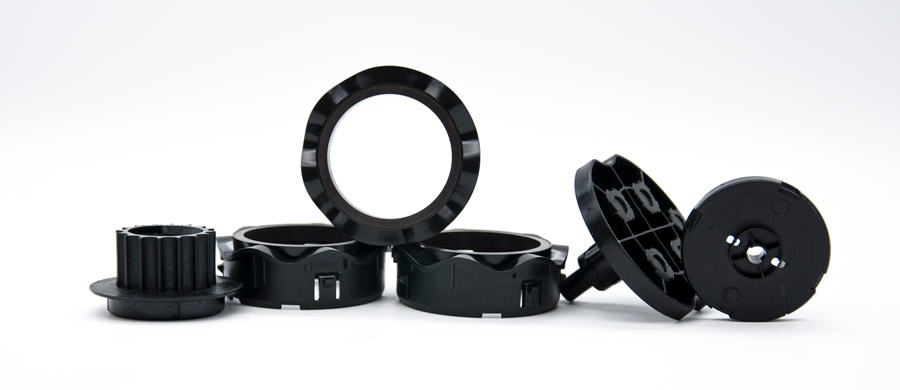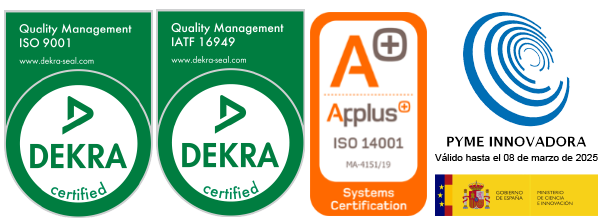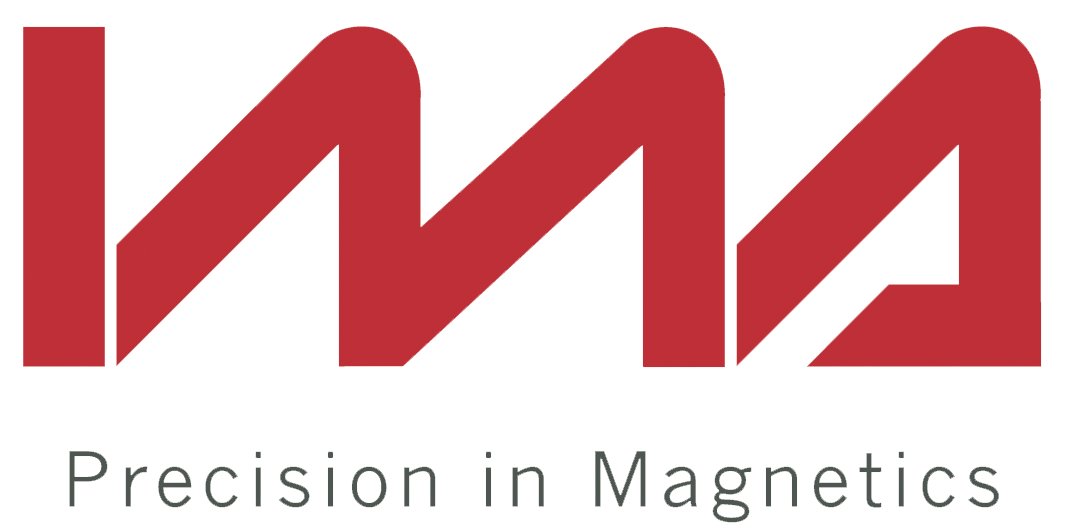Types of injected magnets
The injected magnets are manufactured by means of ferrite or rare earth magnetic powders, incorporated in thermoplastics. Selecting the right combination will affect product strength, moisture absorption, physical strength, magnetic properties and even the maximum operating temperature.
Injected magnets are a technically advanced solution that requires precision moulds and magnets. The manufacture of injected magnets consists of melting the plastic supplied in the form of granulate or powder, to form a fluid mass that is then injected at high pressure into a mold in which the cavity has the shape of the desired product. As it cools, the plastic solidifies, resulting in the type of magnet sought.
Mechanical and magnetic values will vary depending on the material used. The materials used in the injected magnets are mainly polyamides (PA6 – PA11 – PA12). With this type of injection materials, maximum temperatures of 100ºC are obtained for PA12 and approximately 120ºC for PA6. For working temperatures of 200ºC, polyphenol is used, which allows a high degree of resistance to high temperatures.
For rare earth injected magnets, epoxy resins are used that can be used up to temperatures of 120ºC. This type of injected magnets are more resistant to corrosion than sintered materials.
This type of injected magnets are more resistant to corrosion than sintered materials, for this reason they can be used in most applications without special coatings.
What are the advantages of injected magnets?
An advantage of injected magnets is that they are a thinner product, so the manufacturing price can be kept low and the products cool faster, making it possible to achieve a cycle time of only seconds.
Multiple cavity moulds are used to manufacture the injected magnets, i.e., a single mould contains several cavities in the same way, making it possible to produce a large number of the same product during each cycle.
The technique of moulding injected magnets is one of the most commonly used for forming plastic parts and allows complex products to be produced. However, due to the relatively high cost of making a mould, moulding for injected magnets is only suitable for large production volumes.
This technique uses a solid binder (e.g., a plastic or thermoset epoxy) plus the magnetic material, but offers a greater variety of shapes and complexity of shapes compared to compression bonding. The final material is isotropic: the design of the magnetized coil fitting determines the magnetic pattern it takes.
Advantages of injected magnets
Although injected magnets offer lower magnetic performance than compression-bound magnets, they offer the following production advantages:
In addition to the applications of injected magnets in the automotive sector, injected magnets can be used in sensors and motors of various types, as well as in magnetic encoders of household appliances, washers.
An important feature of injected magnets is the low dimensional variability obtained, i.e. the result of polymer shrinkage during cooling. This depends on the thickness of the part and the shape. Typical tolerances are +/- 0.003 in / in. Closer tolerances can be negotiated on critical dimensions.









